The term tympanum (singular) comes from the ancient Greek word τύμπανον (týmpanon), which means ‘drum’ or ‘tambourine’. As with the construction of a drum, the term is used in architecture to describe the decorative surface of a pediment, or the area that is bounded by an arch above an entrance, on the façade of a building.
In Antiquity, as well as in the Middle Ages, tympana mainly decorated sacred buildings, portraying scenes of religion and Greek mythology, including parables from the Bible. Tympana became popular in the construction of government buildings in the course of the historicism that emerged in the 19th and early 20th centuries when architects and artists drew their inspiration from past centuries. This is why tympana now grace parliament buildings all over the world.
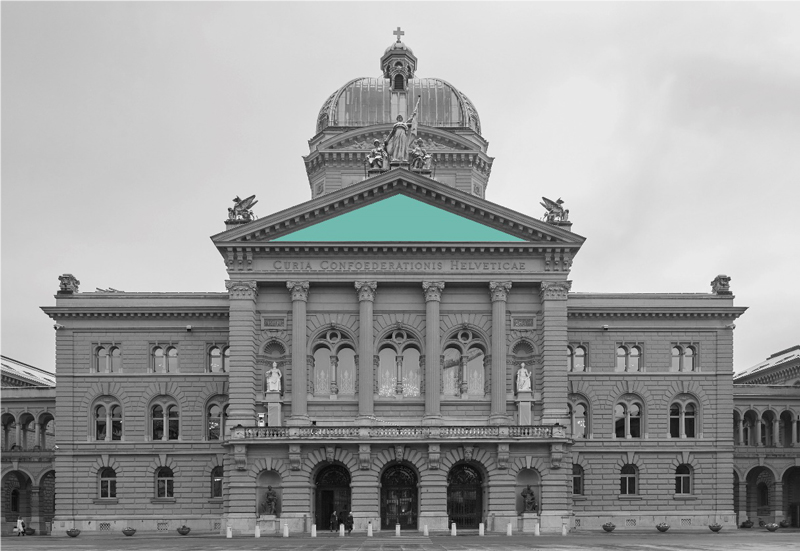
Blank gable surface of the Parliament Building. 15 artists have been invited to submit their proposals for redesigning the tympanum by September 2021 (see press release on the right).
Parliament buildings and their gables
Germany – Reichstag building
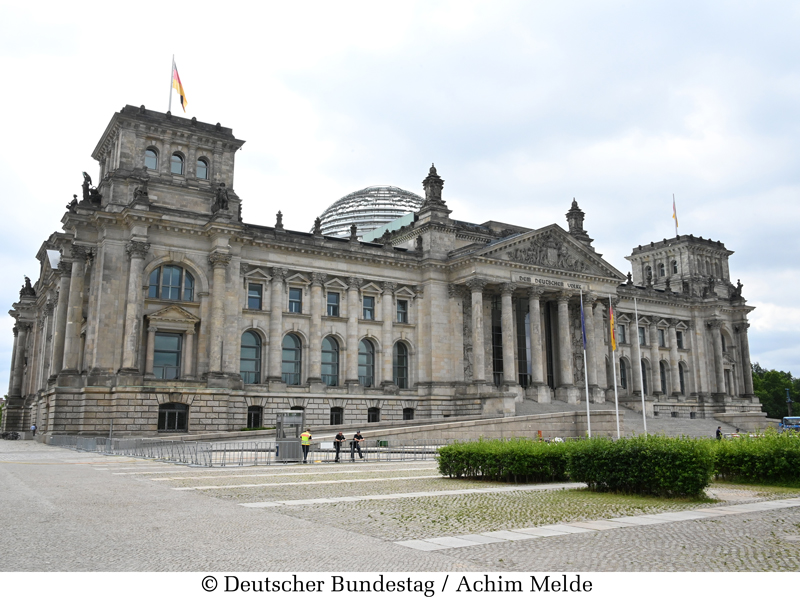
Reichstag building in Berlin, Photo: German Bundestag/Achim Melde
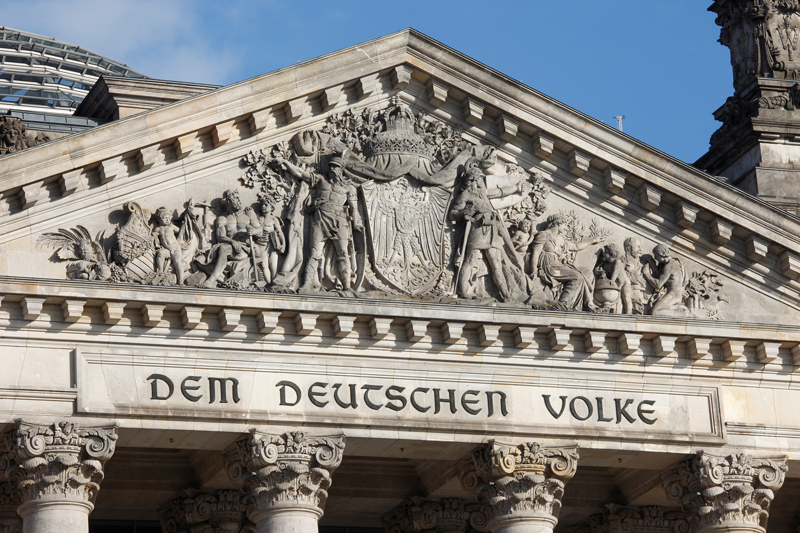
Tympanum of the Reichstag building in Berlin. Photo: German Bundestag/Julia Nowak
Built between 1884 and 1894
→ The Reichstag building in Berlin has been the seat of the German Bundestag since 1999.
Thirty-two million bricks and 30,000 cubic metres of sandstone were used to construct the Reichstag building. The tympanum above the portico of the entrance symbolises the unity of the empire, featuring the imperial coat of arms at the centre and, above it, the imperial crown. To the left and right of the coat of arms are two figures representing northern and southern Germany.
The 16-metre-long inscription ‘Dem deutschen Volke’ (to the German People) stands out. The building commission was long unable to reach an agreement on the inscription, which was installed in 1916. The lettering was intended to boost the public’s waning confidence in the emperor during the First World War. Two gun barrels seized during the Wars of Liberation in 1813-15 were melted down to create the 60cm-high letters of the inscription.
More information:
The Parliament of the Federal Republic of Germany
Austria – Parliament building
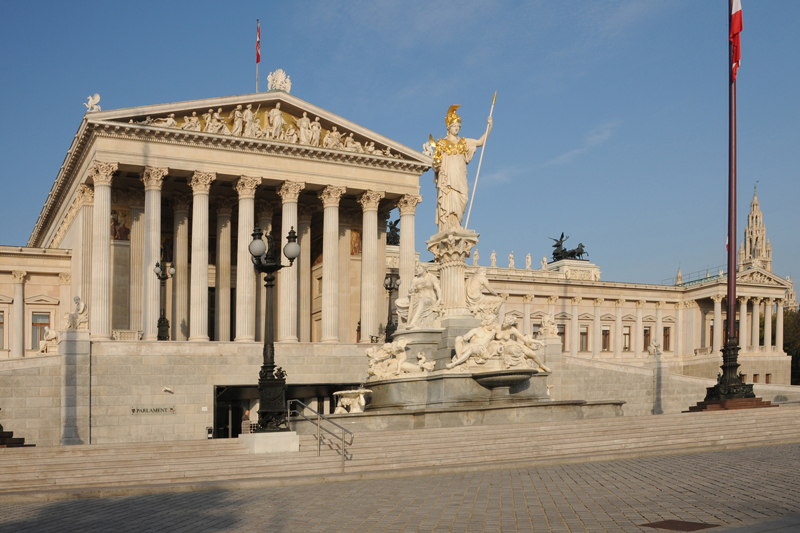
Parliament building in Vienna. Photo: Parliamentary Administration/Bernhard Zofall
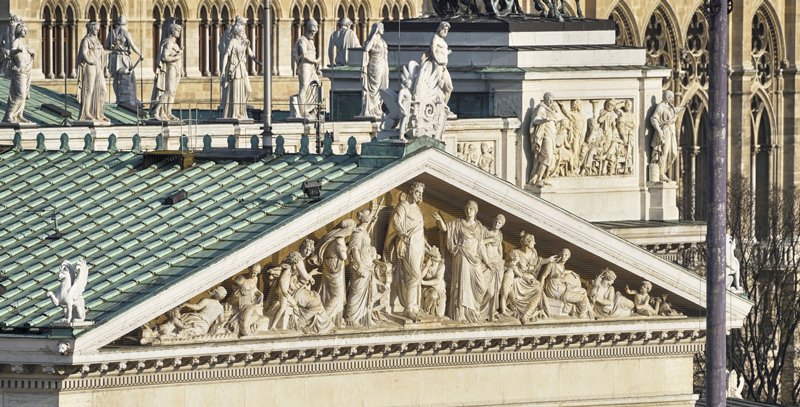
Tympanum of the Austrian Parliament Building. Photo: Parliamentary Administration/Johannes Zinner
Built in 1874 – 1883, renovated since 2017
→ The Parliament Building in Vienna is the seat of the two chambers of Parliament: the National Council and the Federal Council of the Austrian Republic.
Emperor Franz Joseph I (1830-1916) stands at the centre of the gable resembling the prominence of a Roman emperor. The kneeling figures next to the emperor represent the different provinces, including Silesia and Salzburg. The composition of the tympanum draws attention to the emperor’s enormous role in the country. However, according to the Austrian Parliamentary Administration, the monarch’s claim to power clearly portrayed in the gable today almost comes across as an ‘affront to our modern understanding of parliamentarianism and popular sovereignty’.
More information:
The Parliament of the Republic of Austria
Belgium – Palace of the Nation
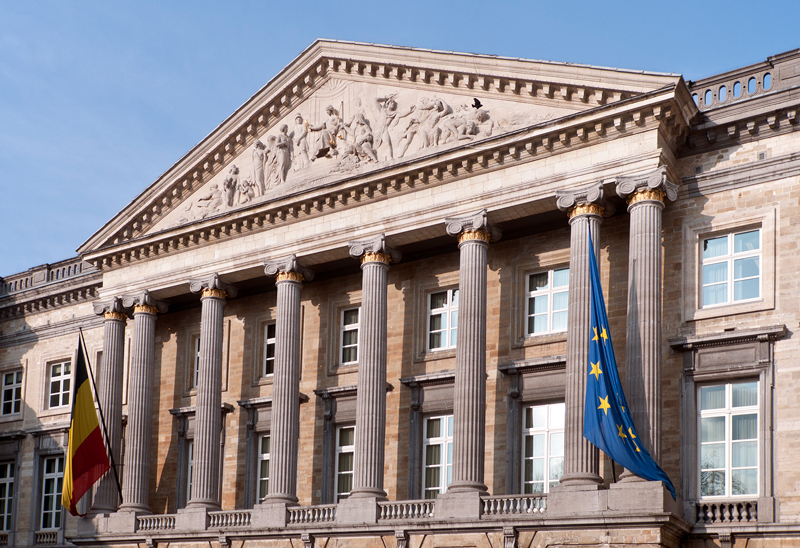
Palace of the Nation in Brussels. Photo: Chamber of Representatives of the Belgian Federal Parliament, Public and International Relations Department.
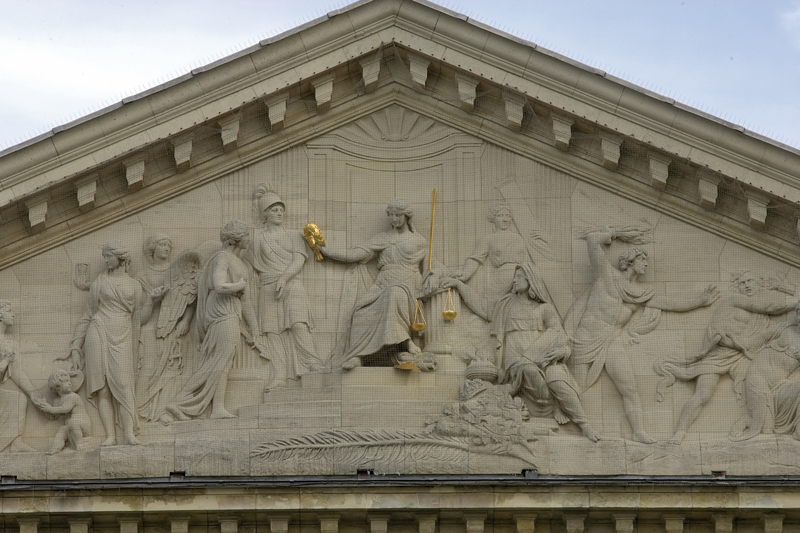
Tympanum of the Palace of the Nation in Brussels. Photo: Chamber of Representatives of the Belgian Federal Parliament, Public and International Relations Department.
Construction completed between 1779 and 1783
→ The Palace of the Nation located in the Belgian capital Brussels is the seat of the Belgian Federal Parliament. This is where both chambers, the Senate and the Chamber of Representatives, meet.
The tympanum represents Lady Justice (seated on a throne in the centre).
More information:
https://www.senate.be/doc/misc/OPENHUIS_2017_UK.pdf
USA – United States Capitol
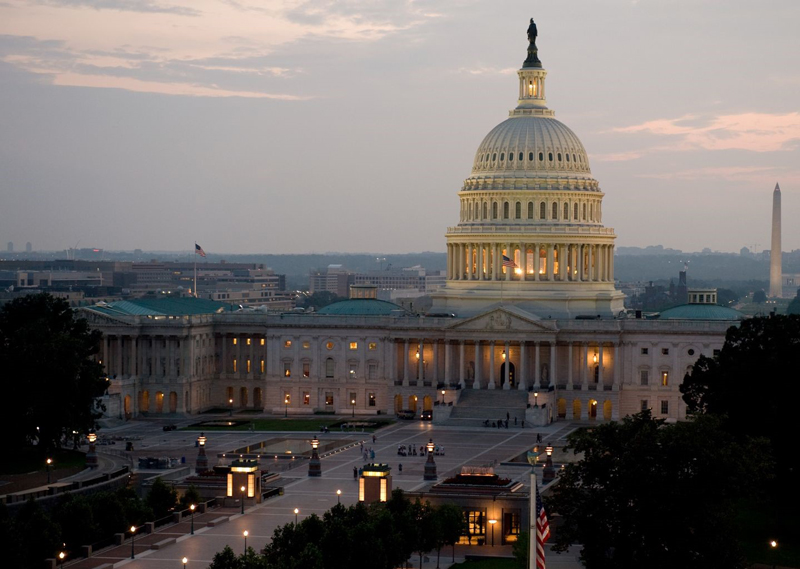
The Capitol in Washington, DC. Photo: www.aoc.gov, Architect of The Capitol

Tympanum of The Capitol, Photo: www.aoc.gov, Architect of The Capitol
Built between 1793 and 1823, major expansion work from 1851 to 1863
→ The Capitol is the seat of the United States Congress in Washington, DC. It is where sessions of the Senate and the House of Representatives are held.
The figure at the centre of the tympanum represents America. Her right arm supports a shield with the inscription ‘USA’. The shield rests on an altar with the inscription ‘July 4 1776’ (founding date of the United States). America points to a figure representing Justice (left). Justice holds a pair of scales in one hand and the Constitution of 1787 in the other. To the right of America are an eagle and the figure of Hope. The tympanum represents the American Union, based on the Declaration of Independence, on justice of the past and on confidence in the future.
More information:
https://www.aoc.gov/explore-capitol-campus/art/genius-america-pediment
France – Palais Bourbon (seat of the French National Assembly)
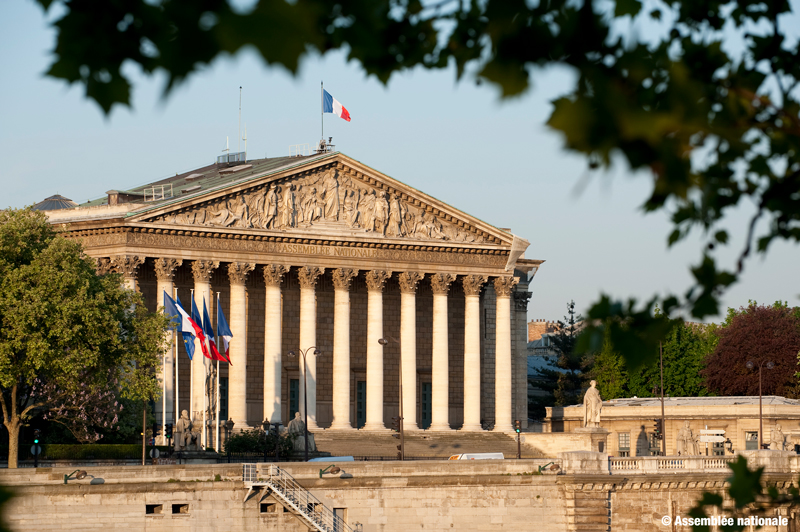
The Palais Bourbon in Paris is the seat of the French National Assembly. Photo: Assemblée Nationale

Tympanum of the Palais Bourbon, Photo: Services des Affaires immobilières et du patrimoine
Built between 1722 and 1728, extended in 1765 and restored in 1815
→ The French National Assembly convenes in the Palais Bourbon, and the Senate convenes in the Palais du Luxembourg in Paris. Joint sessions of the National Assembly and the Senate, known as the Congress of the French Parliament, are traditionally held at the Palace of Versailles.
The original gable portrayed Napoleon Bonaparte on horseback. When Napoleon was overthrown in 1814, the Bourbons (French aristocracy) knocked out the relief with Napoleon, replacing it with a scene glorifying the new King Louis XVIII. However, this scene did not last long; the Bourbons were overthrown in the July Monarchy in 1830. The new pediment, created between 1838 and 1841, portrays France before a throne, flanked by Power (left) and Justice (right), calling on the elite to enact legislation.
Portugal - São Bento Palace
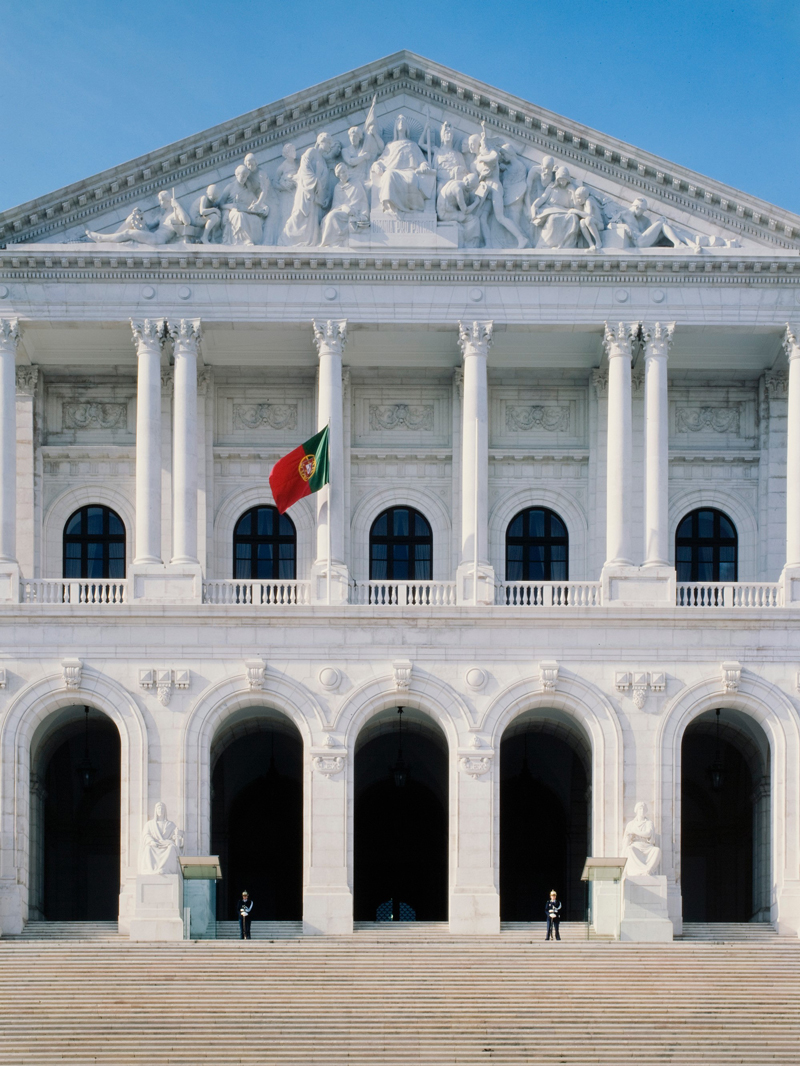
São Bento Palace in Lisbon. Photo: Rui Morais de Sousa, 2005. Photographic Archive of the Assembly of the Republic.
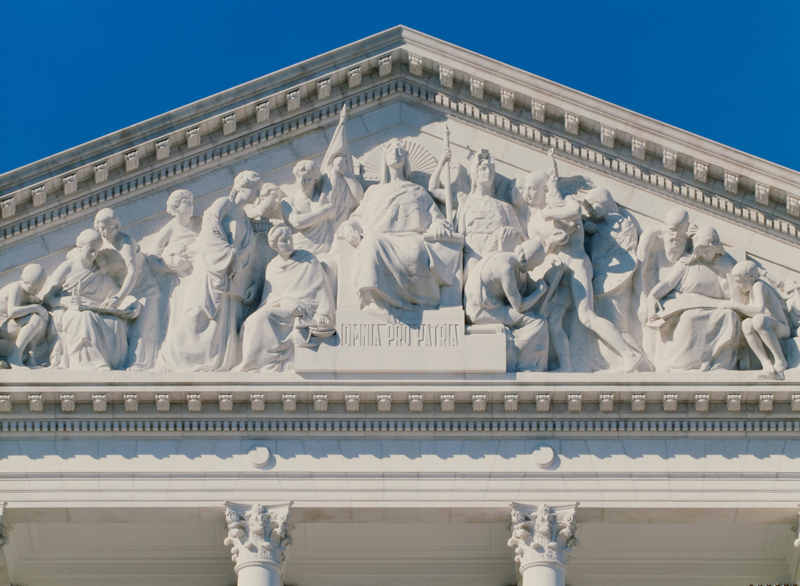
Tympan du palais de São Bento. Photo : Rui Morais de Sousa, 2005. Photographic Archive of the Assembly of the Republic
Built in 1598 (originally a Benedictine monastery), the building was damaged by a massive earthquake in 1755.
→ The São Bento Palace in Lisbon has been the seat of the Portuguese parliament since 1834.
The tympanum features nineteen allegorical figures of all ages and both sexes, representing the industrial, commercial, scientific, legislative, juridical, cultural and artistic aspirations of the Portuguese Nation, with the nation of Portugal personified in the centre.
The inscription ‘OMNIA PRO PATRIA’ means ‘All for the Nation’.
More information:
Get to know the Parliament
Czech Republic – Thun Palace (Chamber of Deputies of the Parliament of the Czech Republic)
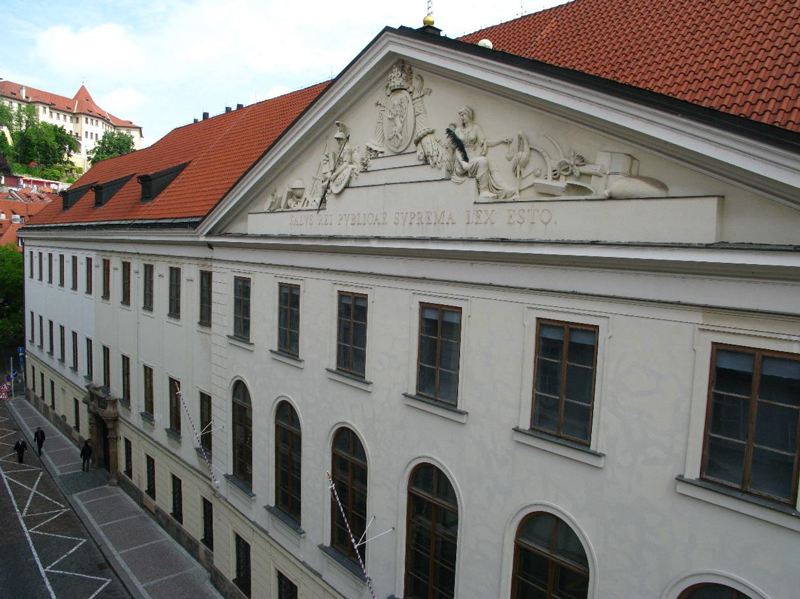
Thun Palace in Prague. Photo: Department of Communication and Education of the Parliamentary Institute
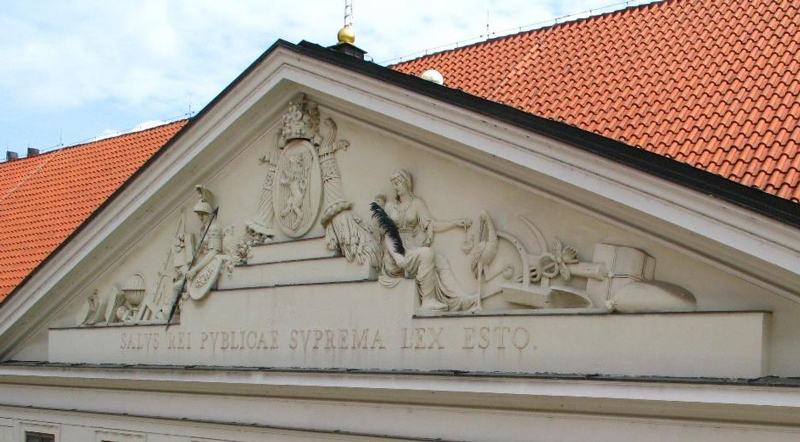
Tympanum of the Thun Palace. Photo: Department of Communication and Education of the Parliamentary Institute
Built probably in 1701, has served as the Parliament Building since 1801
→ Since 1993 houses the Chamber of Deputies of the Parliament of the Czech Republic in Prague (the Thun Palace served as the seat of the Czech National Council until the partition of Czechoslovakia in 1993). The Senate meets in the Wallenstein Palace nearby.
The tympanum dates from the beginning of the 19th century. The coat of arms of the kingdom appears in the centre. The figures of the ancient deities Pallas Athena and Apollo on the sides symbolise both the spiritual and material wealth of the country. The inscription was changed after 1918 to honour the Republic rather than the monarchy. ‘SALUS REI PUBLICAE SUPREMA LEX ESTO’ means ‘The good of the Republic is the supreme law’.
Greece – Parliament Building
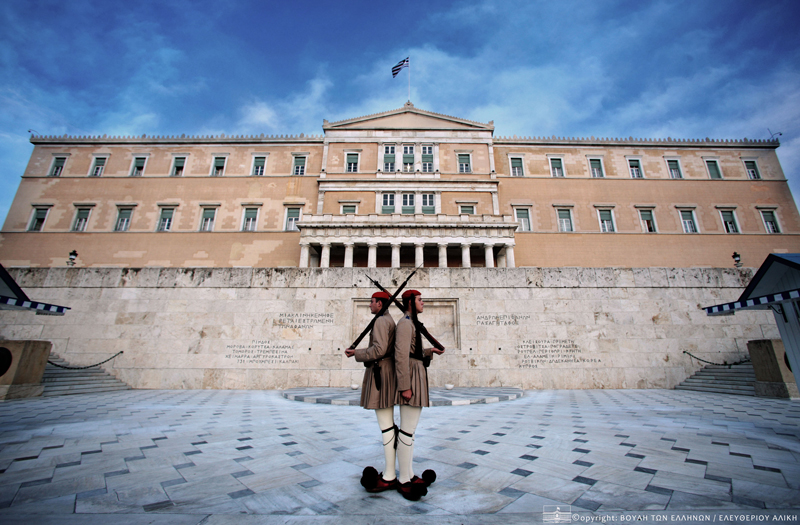
Photo: Hellenic Parliament/Aliki Eleftheriou
Built in 1843
→ Seat of the Hellenic Parliament in Athens since 1929.
Similar to the Swiss Parliament Building, the Greek Parliament Building has an unadorned gable without a tympanum.